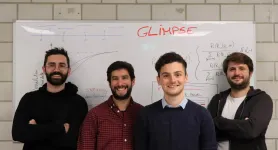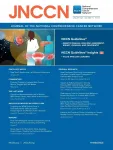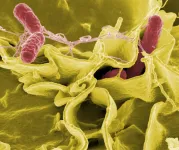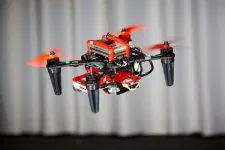Inferring human genomes at a fraction of the cost promises to boost biomedical research
2021-01-13
(Press-News.org) Thousands of genetic markers have already been robustly associated with complex human traits, such as Alzheimer's disease, cancer, obesity, or height. To discover these associations, researchers need to compare the genomes of many individuals at millions of genetic locations or markers, and therefore require cost-effective genotyping technologies. A new statistical method, developed by Olivier Delaneau's group at the SIB Swiss Institute of Bioinformatics and the University of Lausanne (UNIL), offers game-changing possibilities. For less than $1 in computational cost, GLIMPSE is able to statistically infer a complete human genome from a very small amount of data. The method offers a first realistic alternative to current approaches relying on a predefined set of genetic markers, and so allows a wider inclusion of underrepresented populations. The study, which suggests a paradigm shift for data generation in biomedical research, is published in Nature Genetics.
A cost-effective approach to probing genetic markers
Low-coverage whole genome sequencing (LC-WGS) followed by genotype imputation is a method by which a whole genome can be inferred statistically from a very low sequencing effort. It has been proposed as a less biased and more powerful alternative to SNP arrays (see box), but its high computational cost has prevented it from becoming a widely used alternative. The team of scientists led by Olivier Delaneau, Group Leader at SIB and UNIL, has developed an open-source software, called GLIMPSE, that finally overcomes these issues. "GLIMPSE provides a framework that is 10-1,000 times faster, and thus cheaper, than other LC-WGS methods, while being much more accurate for rare genetic markers'' explains Olivier Delaneau. "GLIMPSE is able to greatly enhance a low-coverage genome at millions of markers for less than $1 in computational cost, making it the first real alternative to SNP arrays".
From unbiased data to unbiased healthcare
Genome-wide association studies have so far mostly focused on Europeans: 80% of all GWAS participants are individuals of European descent, yet these make up only 16% of the world population. This is an important ethical issue in terms of healthcare inclusiveness and equitable access to the benefits of biomedical research, as the way genetic markers contribute to disease susceptibility varies across human populations. LC-WGS naturally circumvents the bias inherent to pre-established sets of genetic markers (SNP arrays). It can thus be successfully applied to underrepresented populations, as shown in this study for an African-American population as a proof-of-concept. "In addition to breaking down the financial barrier to enable GWAS studies based on LC-WGS, what is really exciting about this approach is that it enables researchers to efficiently uncover associations in understudied populations" says Simone Rubinacci, Postdoctoral Researcher in Olivier Delaneau's Group and first author of the paper.
Taking advantage of genomes already sequenced
"Our original thinking was: can we make use of the wealth of sequenced genomes to improve those that are newly sequenced? In other words, more for less: this is exactly what GLIMPSE does," explains Diogo Ribeiro, Postdoctoral Researcher in Olivier Delaneau's Group and co-author of the paper. How does it work? By building on the idea that we all share relatively recent common ancestors, from which small portions of our DNA are inherited. Briefly, GLIMPSE mines large collections of human genomes that have been very accurately sequenced (high-coverage WGS) to identify portions of DNA that are shared with newly sequenced genomes. In this way, GLIMPSE can reliably fill in the gaps in the low-coverage data.
A new paradigm for future genomic studies with far-ranging applications
Made available as part of an open-source suite of tools, GLIMPSE paves the way for wide adoption of low-coverage WGS, promoting a paradigm shift in data generation for future genomic studies. Since the first release of the software as a preprint in April 2020, ongoing research has already started to use the tool, for instance to reconstruct the genomes of people living thousands of years ago from ancient DNA, or of COVID-19 patients from SARS-CoV-2 nasopharyngeal swabs as part of a GWAS study.
INFORMATION:
Box: Genotyping and genetic association studies
Genetic markers are very short DNA sequences in the genome, such as single-nucleotide polymorphisms (SNP), known to vary between individuals. The procedure to determine them for an individual is called genotyping. So far, genotyping has mainly relied on SNP array technology which targets predefined panels of markers. Such sets of predefined markers are routinely used to find associations between genetic markers and complex traits in genome-wide association studies (GWAS), which contain medical records and genetic data for thousands of participants. However, SNP arrays, while relatively fast and inexpensive, also have major drawbacks, since new or rare variants, such as those present in understudied populations (read below), can go undetected.
[Attachments] See images for this press release:

ELSE PRESS RELEASES FROM THIS DATE:
2021-01-13
Researchers at Brazil's National Space Research Institute (INPE), in partnership with colleagues in the United States, United Kingdom and South Africa, have recorded for the first time the formation and branching of luminous structures by lightning strikes.
Analyzing images captured by a super slow motion camera, they discovered why lightning strikes bifurcate and sometimes then form luminous structures interpreted by the human eye as flickers.
The study was supported by São Paulo Research Foundation - FAPESP. An article outlining its results is published in Scientific Reports.
"We managed to obtain the first optical observation of these phenomena and find a possible explanation for branching and flickering," Marcelo Magalhães Fares Saba, ...
2021-01-13
Spatial isolation is known to promote speciation - but researchers at Ludwig-Maximilians-Universitaet (LMU) in Munich have now shown that, at least in yeast, the opposite is also true. New ecological variants can also evolve within thoroughly mixed populations.
The idea that speciation is based on the selection of variants that are better adapted to the local environmental conditions is at the heart of Charles Darwin's theory of the origin of species - and it is now known to be a central component of biological evolution, and thus of biodiversity. Geographic isolation of populations is often regarded as a necessary condition for ecotypes to diverge ...
2021-01-13
PLYMOUTH MEETING, PA [January 13, 2021] -- New research in the January 2021 issue of JNCCN--Journal of the National Comprehensive Cancer Network finds more than a third of eligible people miss timely screening tests for colorectal cancer and at least a quarter appear to miss timely screening tests for breast and cervical cancers. The study comes from the University of Alberta, Faculty of Medicine and Dentistry in Alberta, Canada, with findings based on self-reported results from the Canadian Community Health Survey (CCHS) from 2007-2016. According to the author, the results also ...
2021-01-13
WHAT:
Salmonella enterica serovar Typhimurium bacteria (S. Typhimurium) commonly cause human gastroenteritis, inflammation of the lining of the intestines. The bacteria live inside the gut and can infect the epithelial cells that line its surface. Many studies have shown that Salmonella use a "run-and-tumble" method of short swimming periods (runs) punctuated by tumbles when they randomly change direction, but how they move within the gut is not well understood.
National Institutes of Health scientists and their colleagues believe they have identified a S. Typhimurium protein, McpC ...
2021-01-13
Research into the neuronal basis of emotion processing has so far mostly taken place in the laboratory, i.e. in unrealistic conditions. Bochum-based biopsychologists have now studied couples in more natural conditions. Using electroencephalography (EEG), they recorded the brain activity of romantic couples at home while they cuddled, kissed or talked about happy memories together. The results confirmed the theory that positive emotions are mainly processed in the left half of the brain.
A group led by Dr. Julian Packheiser, Gesa Berretz, Celine Bahr, Lynn Schockenhoff and Professor Sebastian Ocklenburg from the Department of Biopsychology at Ruhr-Universität Bochum ...
2021-01-13
(Boston)--Researchers from Boston University School of Medicine (BUSM) provide a new genomics resource that details the small RNA transcriptomes (gene expression) of four bio-medically important mosquito species.
This is the first study to provide a platform for biologists to compare the characteristics of these small RNAs between these four mosquitoes as well as the most widely used insects for genetic experiments, the fruit fly, Drosophila. Although previous studies looked at each of the individual mosquito species separately, this study is the first to allow comparisons between all four species.
"Although ...
2021-01-13
As anxious passengers are often reassured, commercial aircrafts can easily continue to fly even if one of the engines stops working. But for drones with four propellers - also known as quadcopters - the failure of one motor is a bigger problem. With only three rotors working, the drone loses stability and inevitably crashes unless an emergency control strategy sets in.
Researchers at the University of Zurich and the Delft University of Technology have now found a solution to this problem: They show that information from onboard cameras can be used to stabilize the drone and keep it flying autonomously after one rotor suddenly gives out.
Spinning like a ballerina
"When one rotor fails, the drone begins to spin ...
2021-01-13
A recent Point of Reference article, "The meat of the matter: Environmental dissemination of beef cattle agrochemicals," published in Environmental Toxicology and Chemistry, points at synthetic chemical cocktails being emitted from cattle feed yards into the environment and how they can impact our ecosystem and our health.
Industrial meat production facilities have a bad reputation for their impact on the environment. Concentrated animal feeding operations (CAFOs) are known to release greenhouse gases related to global warming and for discharge of manure to watersheds, which affects water quality. A less publicized impact of modern beef production is the excessive use of ...
2021-01-13
Our immune system is never idle. Their task is to detect and eliminate invasive pathogens, and they have no time to lose. The adaptive immune system identifies infectious organisms by recognizing foreign proteins on the surfaces of bacteria, viruses and unicellular protozoans. The interaction of these antigens with immune cells triggers a series of downstream events, which in most cases leads to the elimination of the pathogen.
But pathogenic organisms have developed strategies that enable them to escape detection by the immune system, and the strategies employed by remotely related organisms are often remarkably similar to each other. One way of confusing the immune system is to increase the structural heterogeneity of the antigens it encounters. ...
2021-01-13
(Philadelphia, PA) - Like a failing fuel pump that causes a loss of engine power in a car, a diseased heart can take a serious toll on the body's performance. For some patients, tasks like walking up a flight of stairs or walking across a room eventually turn into exhausting endeavors. This is because, over time, regardless of the underlying cause, heart damage typically progresses, owing to a constant barrage of oxidative stress and toxic lipids that alter heart cell energetics and, ultimately, the ability of the heart to function normally.
Oxidative stress occurs when harmful oxygen-containing molecules outnumber helpful antioxidants, leading to damaging reactions with proteins, DNA, and other cell components. ...
LAST 30 PRESS RELEASES:
[Press-News.org] Inferring human genomes at a fraction of the cost promises to boost biomedical research




